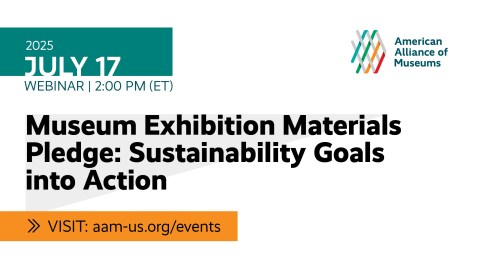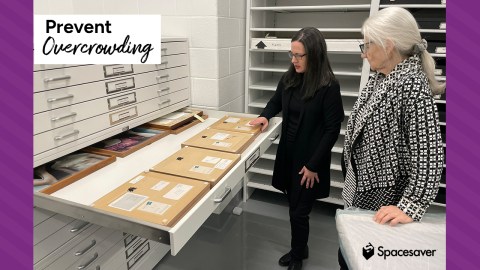Colleen Dilenschneider’s posts on Know Your Own Bone are always a “first read” when they pop up on my blog feed. I suggested our recent guest poster, Jonathan Baskin, read her recent post on museums’ use of social media as he organized his own thoughts on the subject.
Museums of the future will continue to engage and inspire audiences through online communities. And museums are well on their way to melding virtual and physical communities to create this seamless visitor experience. I had the chance to speak with Jonathan Salem Baskin as he was working on his most recent An Alternate Future for Museums post on this blog. We had a thought-provoking discussion about the “realness” of museums’ current online communities and their ability (or inability) to translate into direct admissions sales. By “real,” I mean significant and a thing to be treated as a serious resource. Baskin reminded readers in his post that on-site interaction is a key aspect that differentiates museums from other providers of content. This is certainly true. As things stand, however, online communities don’t always amount to physical communities and getting bodies in the door (hence the Brooklyn Museum’s turn toward meetup.com). But does that mean that the point of all online engagement should be to get bodies in the door? Does this currently-existing gap between the virtual and the physical make online communities less “real” and a less powerful tool to be taken seriously, I wondered?
The moment of wonder was brief. Online communities are increasingly “real” because they provide unique opportunities for museums to fulfill their mission, build fundraising potential through personal connections, and develop a relatable voice, among other things that will be critical for the future development of museums on the whole. Though we aren’t at the point where we are translating Twitter interactions directly into admission sales, online communities are arguably fulfilling different aspects of a museum’s long-term mission that will, in the future, provide another aspect of engagement that will differentiate museums from other providers of content.
A big part of getting to the future is having a good grasp on what’s happening right now. Here’s a brief overview of how organizations are utilizing online communities right now and in a real, significant way that will serve as platforms for the evolution of online engagement in museums:
- Online communities meet the museum’s mission. Social media and online engagement do not belong solely to the marketing department. This is because online communities have an incredible capability to serve as tools to further the missions of museums. Generally, online communities can be created and strengthened based on a desire to be educated and inspired by a museum’s collection.
- When a museum asks a Facebook user to click “like”, they are essentially asking, “Do you want updates from us that will educate and inspire you (or something else related to the mission)?” Let’s be honest: though informative, your fans likely aren’t very interested in updates on the museum’s new open hours. Individuals subscribing to museums’ online communities want to be educated and inspired. If the museum’s mission is to inspire and educate, then online communities provide an avenue for accomplishing just that.
- Online communities create personal connections to the museum: Because online communities take place in a virtual realm in which interactions can be preserved, these interactions allow museums to listen to audiences so that they may better meet visitor needs. Preserved interactions provide the ability for museum professionals to respond to inquiries and meet the interests of certain demographics without alienating others. This kind of attention paid to the museum audience and individual fans and followers often results in the feeling of a personal relationship with the museum. It doesn’t hurt that engaging through social media increases oxytocin, the “cuddle hormone,” in the brain.
- Online communities allow museums to grab onto those positive associations and build personal, potentially long-lasting relationships while fulfilling the museum’s mission and opening up potential opportunities for fundraising, corporate sponsorship, marketing, membership, and program enrollment, among other things.
- Online communities shatter perceptions of museums as stale environments of the past: How strange it seems that even as initiatives like AAM’s Center for the Future of Museums engages forward-thinking museum aficionados, museums are still thought to be institutions of the past. I don’t think that simply having an online community puts a museum ahead of the game (though nonprofits originally paved the way in online engagement over for-profit companies). All organizations– museums or otherwise– have the ability to build an online community now. The museum advantage? Museums have a message and many, many stories to be told. Telling these stories and connecting audiences to museum collections gives museums a modern-day voice. Videos, pictures, podcasts, interactive sites (perfect for teaching purposes!)… was the Internet made for museum engagement?! Museum professionals have an opportunity to challenge tired perceptions of being “stuck in the past” by utilizing these tools.
As a society, we are still experimenting with online communities in order to provide statistical analysis on some of its greater long-term benefits. Almost without a doubt, the future of museums (and everything else) will be heavily connected to online communities. Blame it on society’s growing emphasis on soft skills or Generation Y’s desire for brand transparency, but social technology is sticking around- and it’s real. Armed with this information, the future of community engagement in museums is dependent upon where we go from here. Online communities are doing a lot more than building up brands; they are fundamentally changing up what a museum is and how people interact with these institutions.








